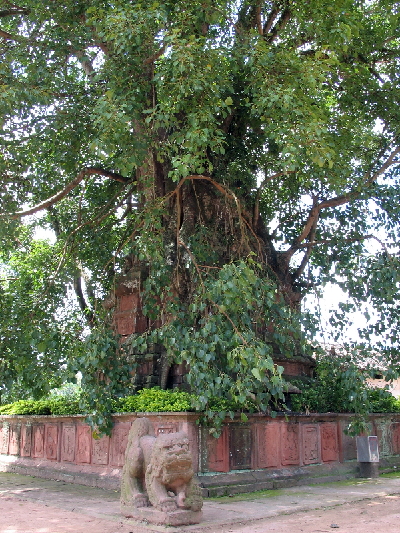

Day 1: Visit Jinggu county for its special two-temple scenery, where one temple is surrounded by banyans and the other has banyans growing from its center. Lunch at Jinggu, then visit the Leiguang Buddha temple, where Sakyamuni was said to have left his fourth footprint on a slabstone during his preaching tour. Leiguang has since become a holy place for pilgrims. Visit the Qiannuo Buddha temple, which carries a primitive simplicity, elegance and strong local characteristics. Dinner and a hot spring treatment at Jinggu.
 |
 |
Day 2: Visit the Mangyu Valley tourist spot in Jinggu’s Baima Mountain after breakfast. The valley has beautiful landscape sceneries, featuring grotesque boulders, birds and rivers. Lunch outside the valley. Visit Zhenyuan county to see the Ancient Tea Horse Road and Kucong Museum. Dinner at Zhenyuan, then enjoy the night scene of Ailao town. Sleep at Zhenyuan.

Day 3: Visit Jiujia village’s Qianjiazhai scenic spot and have lunch and dinner. Head back to Zhenyuan county. The Qianjiazhai scenic spot has a large intact primeval forest, where towering trees, colorful flowers, twittering birds, tortuous paths, gurgling rivers and imposing mountains create a majestic landscape. There are also wild tea trees that are 2,700 years old.

Day 4: Visit Jingdong county’s Huangcaoling ecotourism area, Confucius Temple, Acropolis relic and Yubi Mountain Park. Dinner in Jingdong.
Note: Huangcaoling ecotourism area is part of the Wuliangshan Nature Reserve. It has majestic mountains and rivers and is filled with birds and fragrant flowers. The Confucius Temple is an epitome of Jingdong history and culture and covers an area of 5,292 square meters. The temple has imposing architectures. The Acropolis relic is under provincial protection and is one of the four existing Ming Dynasty (1368-1644) relics.
 |
 |
Copyright ©2014 City of Pu'er, Yunnan Province, China. All rights Reserveed.
Contact: Tel: 86-0879-2189875 Email:puernews@126.com